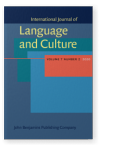Vol. 7:2 (2020) ► pp.147–163
“Say Mashallah!”
Investigating sociolinguistic manifestations of the evil eye in Kuwait
The goal of the present study is to investigate the sociolinguistic aspects in relation to the existence of the evil eye as a belief system in Kuwaiti society. Specifically, we examine the verbal and nonverbal manifestations of the evil eye, even at a distance, when its effect is believed to permeate into online interaction on social media. To achieve this goal, we used a combined research method that consists of an online questionnaire that reached an extensive group of 518 participants and a face-to-face interview with a group from our sample in order to elicit both quantitative and qualitative data. The results demonstrate that believing in the evil eye and its harmful effects is prevalent among all groups of people in the Kuwaiti society, regardless of sociolinguistic factors, which affect the frequency and nature of posts. Our findings also indicate that the same verbal and nonverbal methods of protection from the evil eye used in the offline world are used online. Moreover, these preventative methods appear to be in support of similar ones mentioned in previous literature related to this area.
Article outline
- 1.Introduction
- 2.Literature review
- 2.1The evil eye and methods of protection
- 2.2The link between the evil eye and social media in the present context
- 3.Methods
- 3.1The sample
- 3.2Data collection
- 4.Results
- 4.1The questionnaire data
- 4.2The interview data
- 5.Discussion and conclusions
-
References
